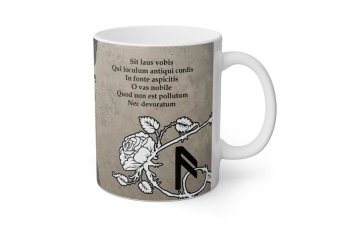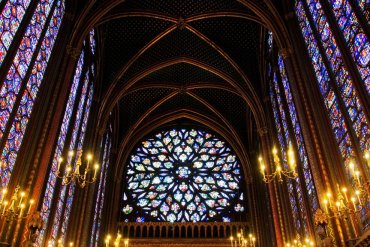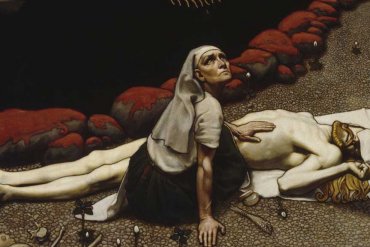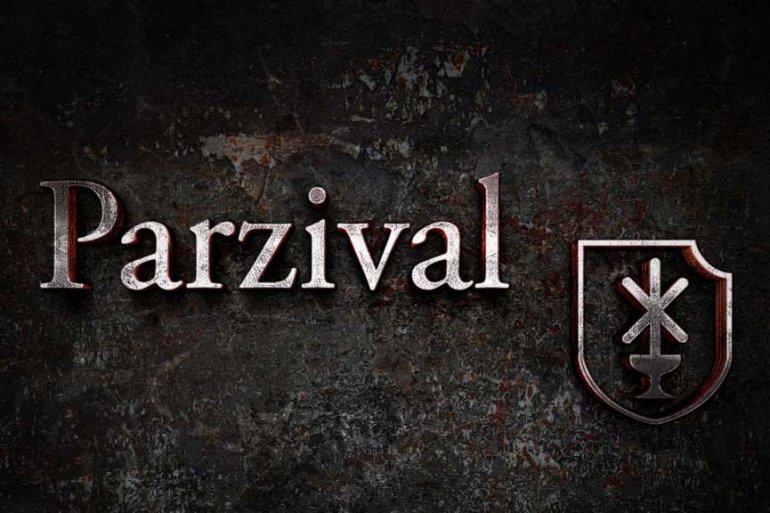The exploration of ancient symbols often reveals hidden threads connecting diverse cultures. In the Maier Files Chronicles, we delve into the higher meaning of the swastika, tracing its roots through various traditions and shedding light on its symbolism beyond conventional interpretations. Herman Wirth’s research on the Ur-Nordic races in Germany serves as a guiding beacon, unraveling the swastika’s significance in a broader,...
Unveiling the Enigmatic Wisdom: Deciphering the Esoteric Meaning of “Sit laus vobis Qui loculum antiqui cordis In fonte aspicitis. O vas nobile Quod non est pollutum Nec devoratum In saltatione antique spelunce. Et quod non est maceratum In vulneribus antiqui perditoris” In the labyrinthine world of ancient texts and cryptic symbols, there exists a riddle (Hildegard von Bingen) that has tantalized the...
Ernst Winkler: “After reading your book, herr Maier, I am hardly further along concerning the heart of the question.” Otto Maier: “How by the devil, my dear Ernst! . . . Do you not read the white of works? Certainly, those who read only the black of a writing will not have seen anything decisive in my book; but you, read the white, read what I did not write and what is there nonetheless; and then you will find it.” […]...
The Rose of the world Who dreamed that beauty passes like a dream? For these red lips, with all their mournful pride, Mournful that no new wonder may betide, Troy passed away in one high funeral gleam, And Usna’s children died. We and the labouring world are passing by: Amid men’s souls, that waver and give place Like the pale waters in...
Plato, as the speaker Timaeus, refers to the Demiurge frequently in the Socratic dialogue Timaeus, circa 360 BC. The Demiurge as the entity who “fashioned and shaped” the material world. The Demiurge is the craftsman. The term demiourgos or craftsman is itself surprising – one might expect such a character to be rather grandly titled Nous or Logos. At Athens, the craftsman...
It was in 1926, in the thick of transformative ferment of the interbellum, that an anonymous volume—issued in a luxury edition of three hundred copies by a small Paris publishing firm known mostly for artistic reprints—rocked the Parisian occult underworld. Its title was Le Mystère des cathédrales (The Mystery of the Cathedrals). The author, “Fulcanelli,” claimed that the great secret of alchemy, the queen of Western occult sciences, was plainly displayed on the walls of Paris’s own cathedral, Notre-Dame-de-Paris. Surrealism […]...
Hidden within age-old classic stories lie the hermetic teachings of alchemy and Freemasonry. In his Mystery of the Cathedrals, the great alchemist Fulcanelli revealed the teachings of the hermetic art encoded in the sculpture and stained glass of the great cathedrals of Europe. What he did for churches, his disciple Bernard Roger does here for fairy tales. It is customary to label...
Wagner’s mythic medievalism and Teutonic underworldliness was shared by the English Pre-Raphaelite Brotherhood’s embrace of William Blake’s prescient dictum—Gothic form is living form—the largely unacknowledged creed of Victorian architectural revival. Barbaric An adjective that had once meant “barbaric,” “Gothic” had been redeemed by perception of the medieval Catholic Church’s architectural embrace of the divine-maternal, the mysterious, tempting curve: the very essence of...
The Greek philosopher Heraclitus had said: “A hidden connection is stronger than one we can see.” Otto Maier was always fascinated with Time. Things occupy space—but how many of them there are (or could be) belonging to time? If you take off the face of a clock you won’t find time there, only human fabrication. Those numbers, circling round, make time almost credible—as if they aroused a sixth sense attuned to its presence, since it slips by the usual five […]...
The Delphic idiom: gnothi seauton (“Know thyself”), assigned to Pythagoras, carries an extended history in the Western world. It grew to become popular all through of the teachings of Socrates as well as Plato, along with the query to obtain self-knowledge was, from that point on, much more a challenge of philosophy than of religion. In the religions, Western man made larger...
llmarinen the Smith, was a young companion of the wizard and demi-god Väinämöinen. Väinämöinen was the god of chants, songs and poetry; in many stories Väinämöinen was the central figure at the birth of the world. llmarinen But llmarinen was a wizard in his own right. He loved the daughter of Louhi, Sorceress of the North. The maiden loved him, too, but...
Teutonic legend. a music drama by Richard Wagner: composed 1877-82; premiere 1882 a male given name: from Old French words meaning “pierce” and “valley” comparable to Percival a knight of King Arthur’s court who sought the Holy Grail a German mythical military division What lies beneath the noun Parzival? In Parzival, Wolfram von Eschenbach tells us that the Grail is a stone that was brought from heaven to Earth by ‘neutral angels’, so called because they refused to take […]...













